The circular metal discs surrounding a vehicle’s wheels are a rim, play a crucial role in supporting and protecting tires, and add style and personalization to any car.
Whether you’re considering replacing your worn-out rims or upgrading to enhance the appearance of your ride, it’s essential to have a clear understanding of the cost factors involved.
From material types and finishes to brand reputation and size specifications, determining how much do rims cost can be a daunting task for many automotive enthusiasts.
We will delve into everything you need to know about rim pricing, providing valuable insights to help you make informed decisions when revamping your wheels.
Types of Rims
Steel, aluminum, and chrome are the three most commonly used materials for wheels and rims in the automotive industry. Some types of Rims are given below.
Steel Rims
Steel rims have long been famous for conventional wheels due to their durability and affordability. Manufacturers have started to shift towards other materials, such as aluminum alloy or carbon fiber. This transition can be attributed to these alternatives’ numerous advantages over traditional steel rims.
A reason why manufacturers are moving away from steel rims is their weight. Steel rims tend to be heavier than other materials, negatively impacting a vehicle’s overall performance and fuel efficiency.
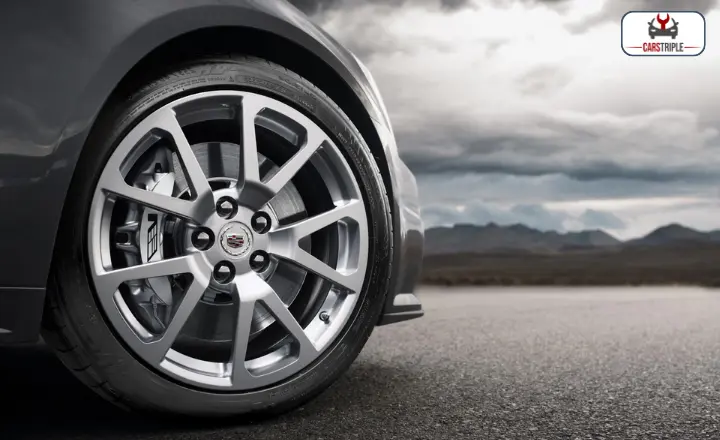
By opting for lighter materials like aluminum alloy or carbon fiber, carmakers can improve acceleration and handling while reducing energy consumption.
Another disadvantage of steel rims is their susceptibility to corrosion. Exposure to weather conditions and road salt can cause steel rims to rust and deteriorate.
Aluminum rims:
Aluminum rims have become increasingly popular in the automotive industry due to their significant weight advantage over steel wheels. Using aluminum alloys in rim construction allows for a much lighter and more efficient wheel, resulting in improved fuel efficiency, handling, and overall performance.
This is particularly beneficial for sports cars and high-performance vehicles where reducing weight is crucial. One standard alloy used in the production of aluminum rims is nickel-aluminium. Nickel increases the strength and durability of the alloy while maintaining its lightweight properties.
These alloyed rims are lighter and provide excellent heat dissipation, making them ideal for vehicles with high-performance engines that generate significant amounts of heat during operation.
Another option available for consumers seeking lightweight rims is magnesium alloy wheels. Magnesium alloys are even lighter than aluminum alloys but are more expensive due to their higher manufacturing costs.
Chrome Rims:
Chrome rims have been a timeless symbol of style and sophistication, captivating car enthusiasts for over six decades. From the swinging 1960s to the early part of the twenty-first century, these gleaming wheels adorned countless vehicles, instantly elevating their aesthetics.
Despite their name, chrome rims are not made entirely of metal; they feature a coating that mimics the lustrous appearance of chrome. This innovative technique combines durability and affordability, making it an attractive choice for manufacturers and consumers.
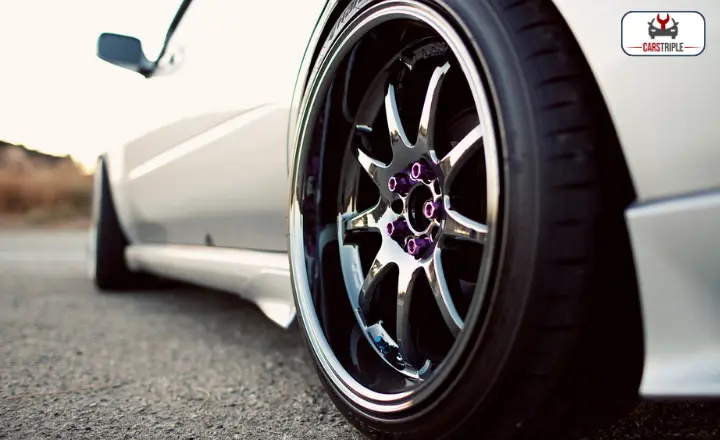
The popularity of chrome rims can be attributed to several factors. Their shiny surface reflects light captivatingly, catching everyone’s eyes as you cruise the road.
This reflective quality adds depth and dimension to any vehicle’s overall look, enhancing its visual appeal. Chrome rims possess excellent corrosion resistance properties due to their protective coating layer.
Spinners Rims:
Spinner’s rims first burst onto the scene in the 1980s and quickly became a must-have accessory for car enthusiasts. These custom wheels featured a unique design that incorporated an outer ring capable of spinning independently of the tire, creating a mesmerizing visual effect when the vehicle was in motion.
Their popularity soared throughout the 1990s and early 2000s, with car owners eager to showcase their style and individuality on the streets.
Available in a wide range of colors and spin motions, spinner rims offered endless possibilities for customization. From classic chrome finishes to vibrant neon hues, these flashy rims allowed drivers to add a touch of personality to their vehicles.
The spinning motion varied from model to model, with some rims featuring smooth rotations while others boasted more dynamic spins that caught everyone’s attention.
How to Measure the Size of the Rim
When it comes to measuring the size of a rim, attention to detail is critical. Whether you are looking to replace an old rim or upgrade your current one, knowing the correct measurements will ensure a proper fit and optimal performance. Some steps are given below: Attention to detail is key when measuring a rim’s size.
Whether you are looking to replace an old rim or upgrade your current one, knowing the correct measurements will ensure a proper fit and optimal performance. Some steps are given below:
Step 1: Measuring a Rim’s Diameter
Measuring the diameter of a rim is an essential step when it comes to replacing or upgrading your vehicle’s wheels. Getting the right size is crucial to ensure proper fitment and optimal performance. If you’re unsure about how to measure the diameter of your rim, here are some simple steps to follow:
- Start by removing the tire from the rim to get clear access.
- Take a measuring tape or ruler and place it across the center of the rim.
- Measure from one inner edge of the rim to its opposite inner edge, passing through the center point.
- Ensure you’re measuring in inches, as most rim sizes are displayed in this unit.
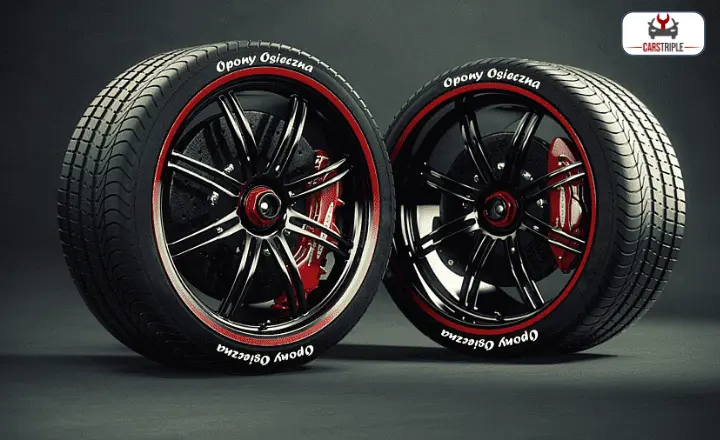
Step 2: Measuring a Rim’s Width
Measuring the width of a rim is an essential step in determining its size and compatibility with tires. The width of a rim refers to the distance between its inner edges, which directly affects the tire’s fitment and performance. To accurately measure the size of a rim, follow these steps:
- Use a measuring tape or ruler: Start by carefully placing the tape or ruler against one inner edge of the rim.
- Measure across: Extend the measuring tool to reach the opposite inner edge of the rim, ensuring it remains parallel to both edges.
- Record your measurement: Take note of this measurement as it represents the width or diameter of your rim.
The width measurement is crucial when choosing tires for your vehicle, as it determines how well they will fit and perform on your rims.
Step 3: Calculating the Bolt Pattern
Are you a car enthusiast who loves tinkering with your vehicle’s wheels? Understanding the bolt pattern is crucial for any modification or customization project.
The bolt pattern refers to the arrangement and measurement of the bolts that secure your car’s wheels to the hub. Here are some key points to consider when calculating the bolt pattern:
- Stud Count: Count the number of studs on your wheel hub. Most cars have either 4, 5, or 6 studs, although other variations exist.
- Diameter Measurement: Next, measure the distance from one stud hole to another across the center of your wheel hub.
- This diameter measurement is typically given in inches but can also be expressed in millimeters.
Rim Dimension:
The distance measured across the face of the wheel, commonly known as the wheel or rim diameter, plays a crucial role in determining the overall size and fitment of a vehicle’s tires. In our case, the rim dimension is 16 inches.
The rim diameter directly influences tire selection and compatibility since it must match the corresponding tire size for proper alignment and performance.
When selecting new tires for your vehicle, it is essential to consider the rim dimension carefully. A matched combination can positively impact ride quality, handling capabilities, and safety.
Mounting a tire with a smaller or larger rim diameter than the manufacturer recommends can affect speedometer accuracy. It may lead to premature wear on both tires and suspension components.
How Much Do Rims Cost:
Many are often taken aback by the hefty price tags when purchasing wheel rims. Even a single rim can cost upwards of $100, leaving car enthusiasts wondering why they come with such a high price tag. Well, several factors contribute to the cost of wheel rims.
The cost of rims is influenced by a variety of factors, including:
Craftsmanship:
There is an undeniable truth regarding custom-made rims – quality craftsmanship and attention to detail come with a price tag. Various factors influence the cost of boundaries, and one significant factor is the amount of time and effort that goes into their creation.
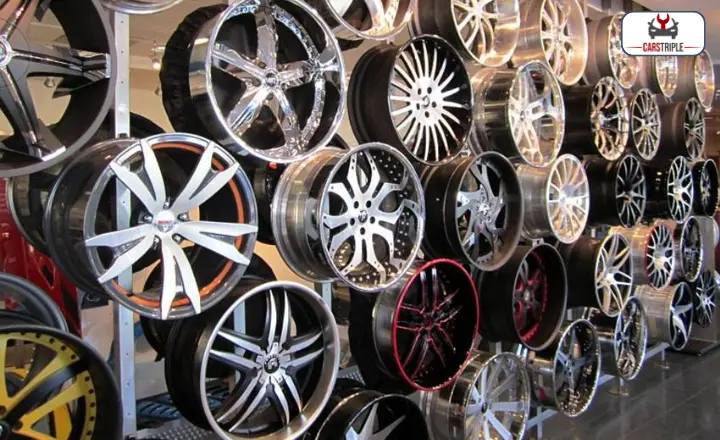
From meticulously designing the rim’s aesthetics to carefully crafting each intricate component, skilled artisans invest countless hours producing these high-end pieces.
Every precision cut, weld, and finish contributes to the final product’s durability and aesthetics. When you choose custom-made rims, you are not just paying for the materials used. You are investing in the expertise and craftsmanship required to bring your vision to life.
Alloy Rims:
Alloy rims are essential to a vehicle’s overall appearance and performance. When it comes to their construction, rims can be categorized as either single-piece or multi-piece. Single-piece rims are made from a single section of alloy, while multi-piece rims require the forging of two to three sections.
The construction process for multi-piece rims involves carefully joining different components to create a seamless and sturdy structure.
This intricate assembly enhances the strength and durability of the rim, making it less susceptible to damage from potholes or other road hazards. Multi-piece rims often come in more intricate designs and customizable options than their single-piece counterparts.
Retailer:
When it comes to upgrading your vehicle’s rims, the options are endless. Retailers now offer a wide range of aftermarket rims catering to every budget and style preference.
Whether browsing through virtual sources online or seeking recommendations from friends, you can find the perfect set of rims to enhance your vehicle’s appearance. If you prefer a more authentic touch, buying directly from the manufacturer (OEM) is also worth considering.
One of the primary factors influencing the cost of rims is their material composition. Aluminium alloy wheels are more expensive than steel ones due to their lightweight nature and superior performance.
Size:
When purchasing rims for your vehicle, one of the critical factors that influences their cost is their size. It may seem self-evident, but it’s crucial to remember that more metal is used for bigger wheels, thus increasing the price.
Manufacturers must account for the increased material required to produce more giant rims, which leads to a higher production cost. Giant rims also require specialized manufacturing processes and machinery, adding to their expense.
It’s important to note that size isn’t the sole determinant of rim prices. While more giant rims come with a higher price tag due to increased material and manufacturing costs, other factors are also at play. The design and brand of the edge can significantly impact its cost.
What Is a Good Price for Tires and Rims?
The price is one of the most important factors when purchasing tires. Tire prices can vary greatly depending on various factors such as style, brand, and tire size. Consumers must understand these factors competently to make an informed decision and find the best deal.
The following are some general pricing parameters for new tires:
When purchasing tires and rims, finding a reasonable price is essential. Inexpensive tires can be found at prices ranging from $50 to $150 each. These budget-friendly options are often suitable for those on a tight budget or simply looking for essential replacement tires.
While they may not offer the same level of performance or longevity as higher-priced options, they can still provide adequate traction and durability for everyday driving needs.
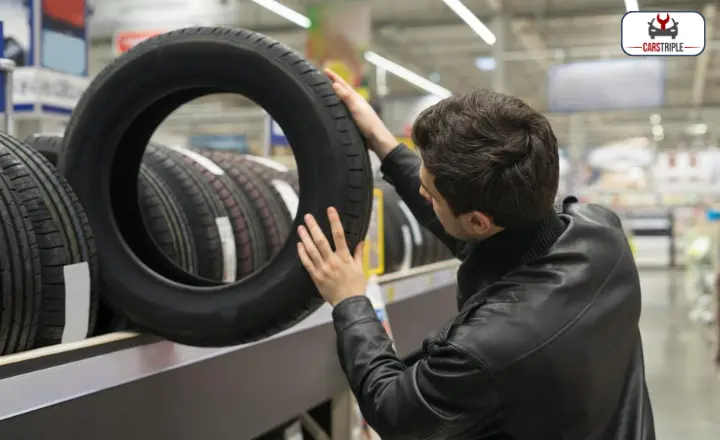
If you’re willing to spend more, moderately priced tires are available for $100 to $300 per tire. These mid-range options often boast better quality materials and construction, resulting in improved performance and longer lifespan than their cheaper counterparts.
With moderate pricing, you can expect enhanced handling capabilities, increased tread life, and reduced road noise. Regarding tires, the price range can vary significantly depending on the type and quality you’re looking for.
High-end tires, such as ultra-high performance or specialty off-road tires, can cost anywhere from $300 to $1000 per tire. These tires are designed to deliver exceptional performance and durability, making them popular among enthusiasts and those who prioritize top-notch performance.
How Much Does Buying 4 Alloy Wheels Cost?
The cost of alloy wheels can vary depending on their size and quality. Smaller alloy wheels, typically around 15 inches in diameter, are generally more affordable than larger ones.
Four smaller alloy wheels can be purchased for around $200-$300. Due to their cost-effectiveness, these wheels are often famous for compact cars and sedans.
Larger alloy wheels, such as those with an 18-inch size, tend to command a higher price tag. A set of four 18-inch alloy wheels can go for approximately $600. This may seem like a significant jump in price compared to the smaller ones.
It’s essential to consider that larger wheels often require more material and intricate manufacturing processes. When considering alloy wheels, it is crucial to consider both your budget and your desired wheel size.
Conclusion:
Determining how much do rims cost can be a daunting task. The cost of rims can vary greatly depending on several factors, such as the material, brand, size, and style. Steel rims are more affordable compared to alloy or chrome rims.
Brand-name rims from reputable manufacturers can come with a higher price tag due to their quality and reputation. Larger, more intricate designs will cost more than bare and smaller rims.
Consumers must consider their budget, needs, and preferences when shopping for rims. By doing thorough research and comparing prices from different retailers, individuals can find the best deal that suits their vehicle and budget.
FAQs:
Do different materials impact the price of rims?
Yes, rims made from premium materials like alloy or carbon fibre are usually more expensive than steel ones.
Does the brand name significantly affect rim prices?
Yes, reputable brands often charge a premium for their quality and reputation, resulting in higher prices than lesser-known brands.
